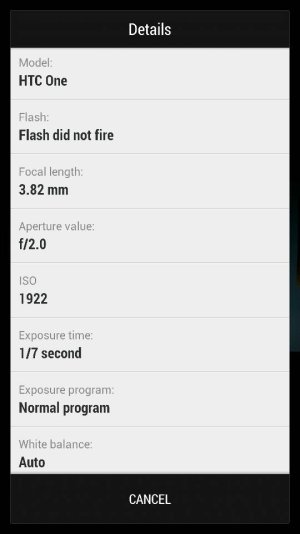The pixel size does not determine how sensitive the pixels are at absorbing light. The larger pixels do not charge or light up more when light is on then. The type of sensor and software determine how sensitive the pixels are, not the size. Its like saying u have a one inch pixel that absorbs more light than using the same pixels to cover an inch but there is a few million of them.
What a larger pixel does is in fact collect more light (image) for a picture, not collect a brighter light because it is bigger.
Also the shutter speed does not indicate that the pixels absorb more light. It just has a faster image sensor and better software.
Sent from my LG-E970 using Android Central Forums
I don't agree with you. And based on what you have writen above, I don't think you have a good understanding of the issues. I can find several references that explain why larger pixels are indeed more sensitive. Can you provide any credible reference that explains why they are not?
Until you can provide that reference, I won't argue with you.
Here is one indicating that larger pixels are more sensitive and perform better at high ISO. (Note with regard to shutter speed, better high ISO performance means that the camera with larger pixels can get an equivalent noise level for an image exposed with higher ISO and faster shutter speed than a smaller pixel camera which will need a lower ISO and therefore slower shutter speed for the equivalent noise level.)
Clarkvision: Does Pixel Size Matter
"Conclusions
Current good quality sensors in digital cameras are photon noise limited. This means there is no possible improvement in performance for the high signal region (bright things in an image) except to increase quantum efficiency of the devices and/or the fractional active area for which the sensor converts photons to electrons (called the fill factor). As both of these properties are reasonably high already, there is limited room for improvement. And even if these properties were improved, there would still be a big difference between large and small pixels. Larger pixels enable higher signal-to-noise ratios at all levels, but especially at low signal levels, assuming the lens scales with the sensor. The obvious improvement still possible would be to reduce the read noise, but that would likely improve large sensors also, thus large sensors with large pixels will always have an advantage for the same field of view, and correspondingly longer focal length lenses are used. Whether the difference in noise is great enough for you to choose a larger sensor, and thus likely a larger and heavier camera, is a decision you must make for yourself.
When choosing between cameras with the same sized sensor but differing pixel counts, the one with larger pixels (and fewer total pixels) will have better high ISO and low light performance (assuming read noise and fixed pattern noise are similar, which may not be the case), while the camera with more pixels can deliver images with finer detail in good light. You will need to decide where that trade point is. My models show the optimum in DSLR-sized sensors have pixels around 5 microns. You will need to determine what your prime imaging will be. For low light work, I might bias the pixels to a little larger than 5 microns; if low light/high ISO work is not as important, I might bias my choice to slightly smaller than 5 microns. For P&S cameras with small sensors, I prefer cameras with pixels larger than 2 microns.
Because good digital cameras are photon noise limited, the larger pixels will always have higher signal-to-noise ratios unless someone finds a way around the laws of physics, which is highly unlikely. Important to remember, however, is larger pixels enable more light to be collected, but it is the lens that delivers the light. An analogy is buckets of water. A large bucket will hold more water than a small bucket. But if you want to collect more water in a given time, one must turn the faucet on higher. So too with cameras and lenses: the bigger lens collects more light and delivers it to the sensor.
Image detail can be blurred by diffraction. Diffraction is more of an issue with smaller pixels, so again cameras with larger pixels will perform better, giving sharper images with higher contrast in the fine details. A direct example of this effect is a small sensor P&S camera can be diffraction limitied at f/5.6 to f/8, whereas the larger pixels in a DSLR will not show the same effects until f/11, f/16, and slower. And given the same pixel count in the P&S and DSLR, the DSLR will resolve finer details."






